


No other commodity enjoys as much universal acceptability and marketability as gold.
Hans F. Sennholz




No other commodity enjoys as much universal acceptability and marketability as gold.
Hans F. Sennholz
In this commodity-focused edition, Sam McMurray, Head of International Capital Introduction at Marex , writes about investor interest in commodity hedge funds, the rising number of funds and demand for talented PMs. Turning to gold, Juan Carlos Artigas, Global Head of Research, World Gold Council, looks back at the precious metal's performance in H1 and the potential for a further "leg up" in H2. Changing tack, in Letter from America, Mark Kollar examines increased interest and investment in women's sports as fast-growing fanbases, higher profiles and an uptick in advertising spend puts them on the PE radar.


June was dominated mainly by US and European political intrigue and interest rate divergence, which suited equity managers far more than macro. To see a full market review, click here. By the end of the month, the HFRI Fund Weighted Composite Index was down -0.2%.
Equities largely held their own, with the HFRI Equity Hedge (Total) Index +0.3%, although looking through the various sub-sectors, it was a mixed bag of results. At the pointy end were funds with sizeable tech exposure, while at the back were those funds more weighted to energy. By the end of the month, the best-performing sub-sector was Quantitative Directional, +3.9%, followed by pure Technology, +2.6%, and at the other end of the scale, Energy/ Basic Materials, -1.9%.
Event-Driven was marginally down, with the HFRI Event-Driven (Total) Index -0.1%. Multi-Strategy and Distressed were in positive territory, up +0.6% and +0.4%, respectively. The Activists again struggled to make ground, down -2.1%, taking their year-to-date number to -0.5%; Special Situations was also down -1.1%.
It was in Macro where much of the pain was felt, with no single strategy covering itself in any glory and the HFRI Macro (Total) Index was -1.7%. Commodity exposure was largely to blame - the sector's Achilles heel - with the Commodity Index -4.1%. The Systematic Index was also -1.8% and Discretionary -0.6%. In this painful environment, the best-performing sub-sector was currencies, with the Index, -0.4%.
Relative Value was the best performing strategy, with the HFRI Relative Value (Total) Index +0.4%. Within this, Fixed Income Sovereign led the way up +0.8% and Yield Alternatives the worst -0.7%.
Turning to the regions and India was back as the best-performing Index, +4.5% (taking the year-todate number to +9.4%), followed by the MENA Index, +1.8%. China, however, continued to drag along the bottom, -2.0%.

One of the standout fundraises over the past month was HPS Investment Partners' Specialty Loan Fund VI, which closed on $21.1 billion in investable capital. This figure includes $14.3 billion in equity commitments from various global institutions and available borrowings. The fundraising was split approximately $10.4 billion into the commingled fund and the rest SMAs. The fund has already invested over $2.5 billion across 29 investments. Today, the creditfocused alternative investment firm manages around $114 billion.
Hamilton Lane closed its latest secondary fund at $5.6 billion. This is for Secondary Fund VI, which is the firm's largest fundraise and above its original $5 billion target; it is also a continuation of its secondary asset class franchise. Hamilton Lane has been active in the secondaries for more than 24 years, with the previous fund, Secondary Fund V, closing on $3.9 billion in 2021.The firm manages over $920 billion in AUM and supervision ($124 billion in discretionary assets and approximately $796 billion in nondiscretionary assets), with secondary investments totaling almost $30 billion.
Reuters reports on KKR's plans to raise $20 billion for its latest North American fund. This is North America Fund XIV, which follows the $19 billion raised three years ago for XIII, which to the end of March had an IRR of 20.5%, having deployed 64% of its capital. The fund marketing for XIV started in early June, with Robert Lewin, KKR CFO, commenting separately that the environment feels a "little bit better on the fundraising side than it felt maybe 12 to 18 months ago."
Ardian has raised $3.2 billion for its Sixth-Generation Co-Investment Platform. This is a 23% increase on the previous Generation fund, which attracted commitments from 188 investors globally. Fund VI provides access to minority investments in companies alongside top-tier private equity sponsors. The Fund is already 40% invested through 18 transactions. Ardian today manages or advises around $166 billion of assets across private equity, real assets and credit.
HongShan's closed its latest VC tech fund at $2.5 billion. HongShan, which was previously Sequoia Capital's China arm, got decent coverage in the Financial Times on this news as the biggest new VC fund in China in the past year. The RMB fund may well ruffle US LP feathers in the USD-denominated fund, with the RMB fund potentially investing in some "sensitive" areas.


Thomas H Lee Partners or THL has raised $900 million for the firm's second automation fund. The raise matches the previous fund, which invests in automation-focused companies, ranging from physical technologies, such as robotics or digital technologies, to artificial intelligence and hybrid technologies, such as the Internet of Things (IoT).
With the venture capital funding environment proving tough going, Industry Ventures' $900 million close is impressive. The San Francisco VC, which today manages $8 billion, is taking a hybrid route to this latest fund, investing in emerging seed and early-stage funds through primary and early secondary LP interests and direct investments.
Blackstone is planning to double the size of the European Private Credit Fund, which currently stands at €1 billion. Compared to its US cousin, which stands at $54 billion, the fund is a minnow but is managed in a similar fashion, with 80-85% private credit assets and the remainder more liquid assets.
Neuberger Berman's evergreen fund, NB Private Markets Access Fund, has surpassed $1 billion in assets. Through a registered structure, this fund launched in 2021 provides direct exposure to private companies through an actively managed portfolio of private equity investments and access to co-investments and secondary investments.


Carlyle has launched their AlpInvest Private Markets Sicav, an evergreen fund for European private wealth clients.
This fund is just the latest step by Carlyle to target the private wealth market, with the private equity offering providing clients with exposure to secondary and co-investment fund opportunities.
It also follows last year's launch of Carlyle AlpInvest Private Markets Fund, a US-registered fund available to US investors.
According to Fortune, legendary tech VC investor Andreessen Horowitz is planning to launch his firm's first private equity fund. The 16z Perennial Private Equity Fund has been filed with the SEC and states that it will "invest in the private equity asset class" but says little more. Horowitz's move is a material shift from his more traditional routes and will be
The Financial Times has written about private equity's role in shaping the UK economy over the past two decades.
Private equity has left an indelible mark on various UK industries, from acquiring high-street names to investing in sectors ranging from insurance to nursing homes. The aggregate value of private equity transactions peaked at £91 billion in 2006, when London was the European hub for buyout groups.
However, the industry's record and relatively lower
taxation are now facing heightened scrutiny, with the new government proposing increased taxes on performance fees received by fund managers. This political change is naturally raising concerns about deal-makers' potential relocation and industry future. There are also concerns about delivering market-beating returns in a changing economic landscape.
Given this uncertainty, private equity needs to adapt to new challenges to maintain its success.
through the wealth management division, Perennial Management, set up in 2022. The development is part of a broader strategic move by the firm to build out the business and develop new private wealth channels, with Perennial launching an evergreen fund in June of last year.


Has private equity bottomed?
Bain asks this in their midyear report.
While deal-making has definitely slowed down in the first half of 2024, there are signs of a potential recovery, albeit not particularly strong. However, multiple challenges remain, Bain writes, including sluggish deal-making, exits, fundraising, and low levels of distributed to paid-in capital,
which impact funds' ability to raise new capital.
The report also highlights the macroeconomic uncertainties and geopolitical tensions affecting deal-making and fundraising in the industry.
Overall, the report suggests that the private equity industry remains challenging and needs to find ways to overcome these obstacles to regain momentum.

With data so important in our space, an intriguing development is BlackRock's acquisition of Preqin for $2.6 billion.
There are only a handful of quality hedge fund databases, so the marker has been set down value-wise, with BlackRock winning against S&P Global and Bloomberg. Perhaps WithIntelligence will be next on the block?
BlackRock sees enormous value in better accessing private markets, with Preqin covering fund performance for 33,970 funds, claiming 'unsurpassed hedge fund coverage.'
BlackRock has said Preqin will be kept as a standalone business, with the data integrated into its Aladdin and the eFront risk management businesses.

After what seems an eternity, Jain Global finally launched at the start of July, having been one of the most hyped start-ups.
Although the firm's original AUM ambitions were somewhat pared back, it still launched with $5.3 billion.
According to Bobby Jain, one of
the reasons behind the difficulty of fundraising has been the amount of money flowing to private credit, which has been eating up potential hedge fund investment. Speaking at the UBS Singapore Family Wealth Forum, Jain said that the fundraising environment is proving a headwind for private equity and venture capital and a "flat
Pulling in sizeable seed money is the holy grail for funding and launching hedge funds. Unfortunately, it can come with a price, as Sparta Capital Management recently discovered when Balyasny Asset Management pulled its investment after only one year.
Speaking at the Bloomberg Invest Conference, AQR's Cliff Asness said that machines play a more critical role in the firm.
Automation has not been a traditional route for Asness, who has been more
According to Bloomberg, this was a $250 million managed account for the London-based activist manager, which suffered an 8% loss in the first quarter of this year. Sparta was set up in 2021 by Franck Tuil, who had spent two decades at Elliott.
wind" for hedge funds. We think that the mere fact that Jain was speaking at the event is indicative that the fundraising environment has not been straightforward.
The firm has hired more than 200 people, with the bulk in the US, 50 in the UK and 30 in Asia.
sceptical than others about this space, but he appears to have come around, saying, "We let the machine decide more… it's just a little bit better than us."


For so long, Andurand Capital Management has been the big oil trader, looking for the $150 barrel of oil, but has recently expanded its focus to other commodities. Pierre Andurand, who made his name in oil, is concerned about potential oversupply. In an investor letter, which Bloomberg has seen, he said, "We will reengage in oil markets once we obtain greater clarity on the supply side." Having closed his long oil future positions, he has focused on copper and cocoa markets, which hit highs earlier in the year. This move has nothing to do with underlying performance, which has been very strong this year for Andurand funds and is instead a tactical shift to where they see the opportunities lie.


BlackRock is increasingly flexing its muscles in the private wealth channels, as it looks to open up new routes to private markets. The firm's latest move is a partnership with Chicagobased GeoWealth that provides access to private equity and debt funds in customised portfolios for US high-net-worth retail clients.
BlackRock believes the US wealth market has big potential and the model portfolio business will double in assets in the next five years. They are not alone in this thinking, with this part of the market becoming ever more competitive, with BlackRock up against the likes of KKR, Blackstone, and Apollo.
Secondaries are on the money right now, according to a Preqin LP survey, which found that just under two-thirds of those questioned saw the investment as providing decent investment opportunities. Again Preqin data backs this up, with three times more raised last year than 2022 and 70% above of these fund raises above target. While secondaries remain a small part of the private equity market, totaling around 6.5%, they are gaining ground, particularly in infrastructure, real estate, and private debt.

Any GP looking for sovereign wealth fund investment needs to do their homework, says Karen Khalaf, a member of Bain & Company's Private Equity practice and expert in sovereign wealth funds.
Speaking on Bain's Dry Powder podcast, Khalaf discusses the various types of sovereign funds and their requirements. She talks about the vast asset growth and evolving requirements of sovereign funds, with legacy funds continuing to grow and the rise of more strategic investment funds; yet no one cap fits all, and every fund is different.
While sovereign funds are always interested in performance, they want to know what you will do
for them; consequently, any presentation needs to be "elevated" with "differentiation mechanisms" and be "bold". Sovereign funds want their investment to be central to a GP and are increasingly seeking idiosyncratic collaboration opportunities.
In any presentation, the GP must also know the sovereign fund back to front, what they do, and what they stand for - as sovereign funds are public bodies, this information is readily available. Consequently, all presentations should be tailored accordingly and positioned as the start of a back-and-forth dialogue, with the ability to adapt as required. To listen to the podcast, which is very good, click here

I was at the Broadway show Cabaret last week and during intermission I saw a women with a tee-shirt that read, “Everyone Watches Women Sports.”
The message was not lost on me. But maybe it needed an asterisk that read, “Everyone Also Wants to Invest in Women Sports.” It may sound like hyperbole, but it is not far from the truth. Let’s look at the first part, the fans. It’s well advertised that the fanbase for women’s sports is on a meteoric rise, whether it is on broadcast channels or live at stadiums with record numbers breaking over and over again. Call it the Caitlyn Clark effect, the WBNA superstar at the Indiana Fever, who along with Angel Reese and Kamilla Cardosa, both of the Chicago Sky, and others have pumped up the excitement for college basketball. But watching women’s sports expands beyond basketball to soccer, volleyball, tennis and golf.

A few examples for our asterisk on the tee shirt: PE firm Sixth Street acquired a majority stake in Bay FC in 2023 and is now part of its sports portfolio that includes soccer teams FC Barcelona and Real Madrid as well as the NBA’s Spurs. More recently, in June, Carlyle announced that it had acquired a majority stake in Seattle Reign FC for $58 million in a partnership with the Seattle Sounders FC.
And Kara Nortman, who launched Angel City FC in Los Angeles in 2019 has started a sports-focused PE firm called Monarch Collective, to be in her words an inspirational “change agent” type of equity product for teams and leagues at critical moments in their evolution.
The big opportunity and important part of this evolution, observers say, for investors, is the content play that these sports teams can contribute to revenue streams.
According to a recent report from Deloitte, elite women’s sports is expected to produce some $1.28 billion in global revenue for 2024, breaking the $1-billion mark for the first time. Soccer and basketball dominate total revenue at 71 percent, or 43% and 28%, respectively.
As a result, Deloitte also said it expects women’s elite sports will continue to be allocated additional prime time broadcast slots, making the women’s events easier to find and watch and more important, monetize. For now, however, matchday revenue is the biggest overall contributor to revenue, followed by broadcast and commercial (sponsorships, merchandise, partnerships).
Amid this backdrop, for the alternatives markets, women’s sports have been one of the latest investment opportunities, receiving more interest from private-equity firms.
The big opportunity and important part of this evolution, observers say, for investors, is the content play that these sports teams can contribute to revenue streams. This will come in many forms from broadcasting rights to leveraging live performances for experiential marketing and adjacent businesses. In turn, bigger broadcasting deals means more corporate sponsorships, more infrastructure and the golden ticket, better pay for athletes.
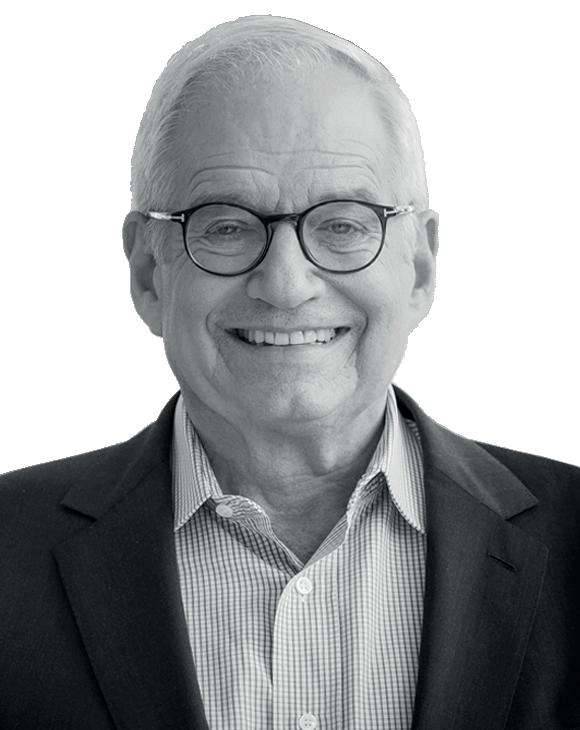
But in some ways, perhaps the best example of popularity, opportunity and success can be found at the National Women’s Soccer League’s Kansas City Current’s new $70-million stadium, a first for a women’s professional team that is now sold out for every game with a waiting list of 3,000 fans. An ,.ui11,500-seat stadium shows that everyone is actually watching women’s sport with many watching for the next best opportunity to invest as well. Soon, no asterisk will be needed.
Mark Kollar Partner, Prosek Partners



The US Treasury, the US Fed, the UK Treasury, the UK central bank and all of the other offices of government around the world, among other things, tries to predict where inflation is going, where unemployment is going, where interest rates are going, where GDP is going, [but] their track record on forecasting is beyond abysmal. The US Fed employs 400 PhD economists. Between them, Harvard and MIT employ 100. So they got four times as many PhD economists and they can't forecast a damn thing.
Rob Arnott, Founder of Research Affiliates


Sam McMurray, Head of International Capital Introduction, Marex
Hedge Fund investor demand for commodities has always been cyclical. Following a long period where interest in the asset class was low, in the last twelve months we have seen interest increase at a considerable pace. Demand is coming from both large, institutional hedge funds to smaller, more nimble family offices. For many smaller allocators, this is a first venture into pure play commodities. As such, the preference for these players is to find a more diversified commodities product, whereas the larger institutions can be more specific in their approach.
With demand rising, so has supply. We have seen numerous new commodities-oriented strategies and commodities funds aiming to launch in response to investor interest. There has also been a noticeable increase in demand for portfolio manager talent
within the commodities sector, providing further evidence that commodities are the ‘flavour of the month’, particularly from multi-strategy pod shops.
Most allocators prefer to gain commodity exposure via a diversified, multi-strategy offering in the short term. Over time, the average investor can more readily put capital to work with specialist commodities funds as their portfolios mature. For larger investors with more experience in commodities investing, it is easier to invest in specialist funds with a singular focus – such as metals or natural gas. Many of these large investors prefer to put capital to work via separately managed accounts. Generally, most commodities funds that come to market take a global approach, however there

We
have seen numerous new commodities-oriented strategies and commodities funds aiming to launch in response to investor interest. There has also been a noticeable increase in demand for portfolio manager talent within the commodities sector...
Sam McMurray, Marex



are examples of portfolio managers launching geographically specific commodities products.
We have seen demand across the spectrum from sovereign wealth funds, endowments and foundations through to smaller family offices looking for these opportunity sets. Many of them haven’t been active in the commodities space up until this point or have been relatively inactive in the asset class over the last few years. Firms and portfolio managers who can offer a diversified strategy, with everything under one umbrella, are undoubtedly seeing the benefits of the significant uptick in demand for commodities strategies.
Sam McMurray, Head of International Capital Introduction, Marex
Sam joined Cowen in July 2018 and transitioned to Marex in December 2023 when Cowen Prime Services was acquired by Marex. Based in London, Sam is responsible for building relationships and sharing investment ideas with European and Asian based allocators. Before joining the firm, he was an investment analyst at Tesco Pension Investments, on the alternatives team. He graduated from the University of Birmingham with a BSc Degree in Economics and is a CAIA charter holder.
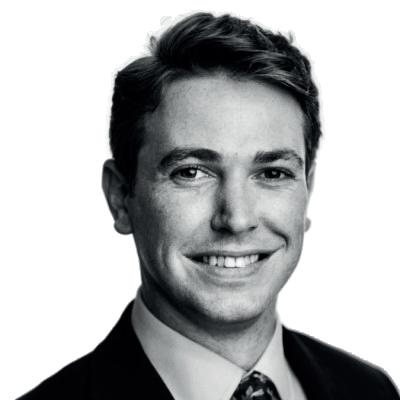


Firms and portfolio managers who can offer a diversified strategy, with everything under one umbrella, are undoubtedly seeing the benefits of the significant uptick in demand for commodities strategies.
Sam McMurray, Marex

Juan Carlos Artigas, Global Head of Research, World Gold Council
Reflecting on 2024 so far, gold has outperformed expectations when we consider the factors at play. Traditionally, a high interest rate environment coupled with a strong US dollar would be a hostile environment for gold. But against those odds, gold has comfortably been trading above US$2,300/oz for most of the second quarter and was up 12% year-to-date (as of 2nd July, 2024).
So, as we look ahead to the second half of the year, investors might be wondering – can gold’s momentum continue? Or will it run out of steam? It would seem that gold, much like the global economy, is waiting for a catalyst. Let’s consider what different aspects of the global gold market could influence the outlook for gold throughout the rest of 2024.
Starting with the investment side of the market, our
data and analysis shows that Western investors have been a missing piece of the puzzle. High trading volumes indicate healthy interest, but gold ETFs in Western markets have seen net outflows yearto-date, and retail demand is also soft. Yet, even with Western investors not showing up in full force, gold’s strong performance in H1 suggests that the market is still not saturated and could see another leg up in H2. Lower interest rates, recession risks and geopolitics may lure them back in. In fact, global gold ETFs have now seen two months of inflows, led by European funds and likely in part a reaction to the ECB’s rate cut.
Turning to the consumer sources of gold demand, jewellery and technology combined make up more than 40% of annual demand, and the hot gold price has cooled down purchasing of these goods. We


...gold’s strong performance in H1 suggests that the market is still not saturated and could see another leg up in H2. Lower interest rates, recession risks and geopolitics may lure them back in. In fact, global gold ETFs have now seen two months of inflows...
Juan Carlos Artigas, World Gold Council



...while there has been a recent deceleration in purchases, our Central Bank Survey indicates that there’s widespread interest in gold by central banks and they continue to see reserves growing.
tend to think of consumers as “price takers” not “price makers.” And if the gold price remains flat throughout the rest of the year, this could give demand in these aspects of the market a boost.
Central bank demand for gold has been making headlines for over a year now as we have seen reserve allocations rise to record levels since the second half of 2022. And while there has been a recent deceleration in purchases, our Central Bank Survey indicates that there’s widespread interest in gold by central banks and they continue to see reserves growing. Central bank demand is often policy-driven, so it is difficult to determine where annual demand will land.
In summary, it is possible that gold may remain rangebound if current market expectations prevail. But the extent of gold’s reaction upwards or downwards will be a function of the magnitude of several
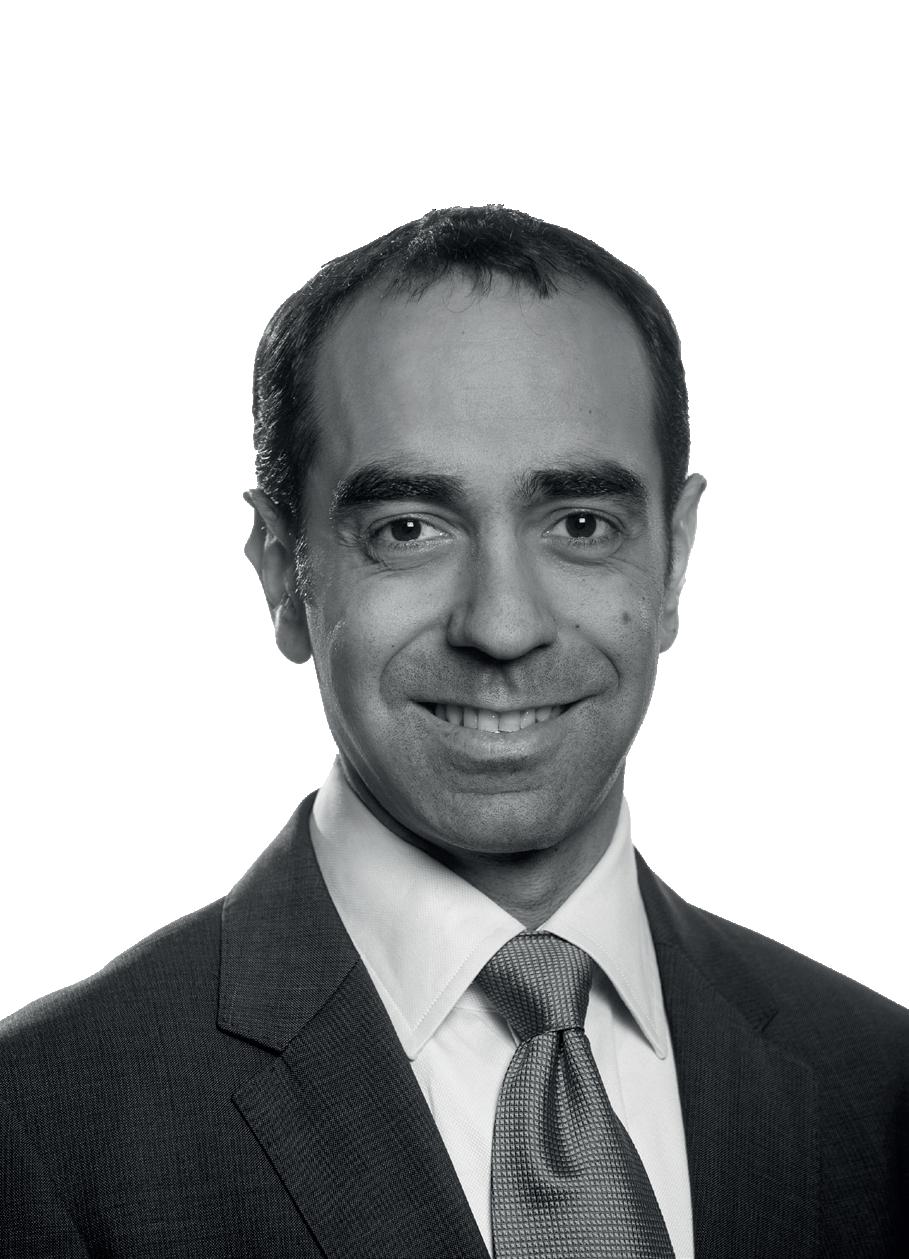
factors including: interest rates, recession risks, geopolitics and investor profit taking. However, there’s a clear path for gold to outperform, likely fuelled by Western flows. On the other hand, in the event that central bank demand drops drastically, rates remain high for longer and Asian investor sentiment flips, we could see a pullback in the second half of this year.
To read the World Gold Council’s full Gold Mid-Year Outlook and analysis, goldhub.org
Juan Carlos Artigas, Global Head of Research, World Gold Council

Presented by
In a significant development for private fund advisers, the US Court of Appeals for the Fifth Circuit unanimously ruled against the SEC and vacated the Private Fund Adviser Rule (“PFAR”) in its entirety, finding that the SEC exceeded its authority.
The PFAR was adopted in August 2023 and added several significant burdens to private fund advisers’ disclosure and reporting requirements. These included the Quarterly Statements Rule, Audited Financial Statements Rule and the Adviser-Led Secondary Transactions Rule. Almost immediately after adoption of the rule, a lawsuit was filed by six private equity and hedge fund groups.
The plaintiffs argued that the rule would require investors to work through a glut of data and obscure relevant information while bearing nearly $500 million in annual compliance costs.
The plaintiffs argued further that the SEC had exceeded its statutory authority because the Dodd-Frank Wall Street Reform and Consumer Protection Act of 2010 (the “DoddFrank Act”) drew a distinct line between private funds and funds serving retail customers. The SEC, in turn, argued that the Dodd-Frank Act gave it the authority to protect all investors, specifically regarding disclosures, sales practices, conflicts of interest and compensation schemes. The SEC also argued that it had the authority to adopt the PFAR because it was designed to prevent fraud and deceptive business practices.
The Court held that the relevant portions of the Dodd-Frank Act cited by the SEC applied solely to retail investors. In its ruling, the Court described the Advisers Act and the Investment Company Act of 1940 as “sister statutes”, noting
that the latter “imposes additional measures” designed to protect retail investors, which Congress chose not to impose on private funds.
The Court also disagreed with the SEC’s second argument, stating that the SEC had not articulated a “rational connection” between fraud and the final rule as adopted.
There are a handful of appeal processes available to the SEC, but as of this writing, the agency has not yet commented on its intentions. The Fifth Circuit was unanimous and decisive in its ruling, and it would therefore seem unlikely that the SEC would request a rehearing from the same panel of three judges.
Pending appeal, it’s fair to say that it’s “pens down” in terms of preparing for the various PFAR compliance dates, but we recommend that the substance of the vacated rule still be noted. For now, the PFAR could be viewed as a Risk Alert, highlighting areas of focus. The SEC’s focus on private funds will likely continue in examinations and in enforcement proceedings, and the big unknown is what the mood of examiners will be in the aftermath of the PFAR’s vacatur.
It’s never a bad time to perform a full review of all policies and procedures, and certainly now is not the time to be complacent. It’s not an “if” the SEC or NFA will come knocking, it’s “when” Conducting a mock SEC exam can be an invaluable exercise. By simulating the examination process, advisers can identify potential compliance gaps and rectify them in a friendlier environment before facing an actual SEC examination.


The Securities and Exchange Commission (“SEC”) announced settled charges against registered investment adviser Twenty Acre Capital LP (“Twenty Acre”) for violating the Marketing Rule.
The SEC alleges that, from 2021 to 2023, Twenty Acre created and used advertisements for prospective investors based on the performance of a private fund it advised. In reality, the material presented reflected the experience of a single investor and failed to disclose that the investor’s performance was considerably higher than the fund’s overall performance and that of other investors in the fund.
The investor portrayed in the advertisement under the heading “Fund Overview” had a return of 44.8% compared to the fund’s net performance, which was -5.7%.
The SEC found the lack of disclosures to be misleading and not fair and balanced, in violation of the antifraud provisions of the Investment Advisers Act, i.e., the Marketing Rule. The settled charges included a $100,000 civil penalty, which considered the remedial efforts taken by the firm and its cooperation with the SEC.

The SEC announced settled charges against registered investment adviser Mass Ave Global Inc. (“MassAve”) and its cofounder and CEO for making false and misleading statements to investors.
According to the SEC, from 2020 to 2022, MassAve made various false and misleading claims about one of its fund’s holdings and disclosures, including modifying underlying portfolio data used in its communications with investors. The SEC also argued that the firm failed to disclose a conflict of
interest when its cofounder began operating a unique hedge fund in China.
After the SEC required MassAve to disclose its inaccuracies and conflicts, many investors began making redemption requests, culminating in MassAve winding down its operations.
The SEC fined the firm $350,000 and the CEO/cofounder $250,000 for violating the antifraud and compliance provisions of the Advisers Act.

The SEC charged investment management firm JAG Capital Advisors LLC (“JAG”) and its founder in connection with a three-year scheme to defraud investors of at least $3 million.
According to the complaint, JAG’s founder and CIO raised at least $3 million from nine investors by lying about fund performance, investment activity, and investment risks. The complaint alleges further that the founder used approximately $1.1 million on personal expenses, while losing approximately $1.7million through high-risk trading and speculative investments.
The founder allegedly concealed the trading losses and the misappropriation of investor funds from the fund administrator by providing fraudulent invoices for fake fund expenses, as well as falsified documents that inflated the value of certain investments.
The SEC’s complaint charges JAG and its founder with violating antifraud provisions of the federal securities laws. In a parallel action, the US Attorney’s Office for the District of New Jersey announced criminal charges against the founder.
CFTC charges unregistered CPO and its owner with fraud and misappropriation
The Commodity Futures Trading Commission (“CFTC”) filed a civil enforcement action in the US District Court for the Western District of Tennessee against Three Bridges Trading Fund, LLC (“Three Bridges”) and its founder. The action alleges that the defendants operated a fraudulent scheme in which they solicited and received at least $2 million from approximately 50 investors to invest in a commodity pool, making false representations about prior trading history.
Three Bridges misappropriated much of the funds, concealing the fraudulent scheme by issuing false account and trading statements to investors, and paying some pool participants using funds from other pool participants, in the manner of a Ponzi scheme.
The defendants commingled pool funds with non-pool assets and directed investors to send money to the founder’s personal account. Bank account records show that the founder transferred money, including pool funds, from Three
Bridges’ bank account to his personal trading account, where he placed trades in his own name. Additionally, the founder failed to receive all pool participants' funds in the name of Three Bridges and failed to operate Three Bridges as a legal entity separate from himself.
The complaint finds that Three Bridges acted as a commodity pool operator (“CPO”) by soliciting, accepting and receiving funds to trade in commodity futures, but Three Bridges failed to register with the CFTC as a CPO, as required. Additionally, the firm’s founder acted as an Associated Person (“AP”) of the CPO but failed to register with the CFTC as an AP, as required.
The CFTC is seeking disgorgement of ill-gotten gains, civil monetary penalties, restitution, trading and registration bans, and a permanent injunction against further violations of the Commodity Exchange Act (“CEA”) and CFTC regulations.


From 31 July 2024, fund managers may begin to use the new Sustainability Disclosure Requirements (“SDR”) investment labels, with accompanying disclosures.
Then from 2 December 2024, if a fund doesn’t include a label but makes sustainability claims, investors should be given simple information explaining how it is invested and why it doesn’t have a label.
Who?
• UK-based fund managers may use the labels.
The logos may be used to market individual UK-domiciled funds to retail and professional investors alike, provided
the FCA is notified by the fund manager in advance of applying the label.

The regime does not yet extend to funds based outside of the UK, to funds with non-UK managers, nor to different types of funds such as pension funds.
• Investors should start seeing labels on investment funds that have a specific environmental or social goal, and should receive annual updates on progress.
The label should provide them with clear and simple information on the goal and the approach to achieving it.

(cont.)
What are the labels?
• Sustainability Focus: Funds investing mainly in assets focussed on sustainability for people or the planet: e.g. activities promoting solar, wind or hydrogen energy;
• Sustainability Improvers: Funds investing mainly in assets which, while not yet sustainable, aim to improve their sustainability. This may include companies on a credible path to net zero by 2025, or those committed to improving social conditions or human rights;
• Sustainability Impact: Funds investing mainly in solutions to sustainability issues, aiming to achieve a positive impact for people or the planet – such as, in generating renewable energy, or social housing; and
• Sustainability Mixed Goals: Funds investing mainly in a mix of assets that either focus on sustainability, aim to improve their sustainability over time, or aim to achieve a positive impact for people or the planet. Examples may include a mix of investments from the labels above: Focus, Improvers and Impact.
All funds using a label must satisfy the “specific” criteria pertaining to their label, and the “general criteria”, for
example:
Presented by
• Sustainability objective: Within its investment objectives, the fund must have an explicit sustainability objective that aligns with one of the labels and is clear, specific and measurable;
• Investment policy and strategy: Ordinarily, at least 70% of the gross value of the product’s assets must be invested in accordance with its sustainability objective;
• Key performance indicators (“KPIs”): The product must have robust, evidence-based KPIs to demonstrate its progress towards meeting its sustainability objective;
• Stewardship: Firms must disclose the stewardship strategy needed to deliver the sustainability objective, including expected actions and outcomes, with an escalation plan for assets demonstrating insufficient progress; and
• Resources and governance: Firms must allocate sufficient resources, governance and organisation to delivering the sustainability objective.
Click here to subscribe to The Alternative Investor; or if you have a question about the publication or a suggestion for a guest article email the team at hello@alternativeinvestorportal.com
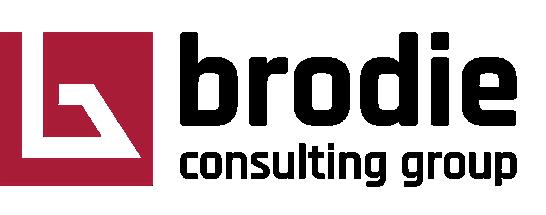
Brodie Consulting Group is an international marketing and communications consultancy, focused largely on the financial services sector.
Launched in 2019 by Alastair Crabbe, the former head of marketing and communications at Permal, the Brodie team has extensive experience advising funds on all aspects of their brand, marketing and communications.
Alastair Crabbe Director
Brodie Consulting Group
+44 (0) 778 526 8282 acrabbe@brodiecg.com www.brodiecg.com www.alternativeinvestorportal.com

Capricorn Fund Managers Limited is an investment management and regulatory hosting business that provides regulatory infrastructure and institutional quality operational, compliance and risk oversight. CFM is part of the Capricorn Group, an international family office, which has been involved in alternative assets since 1995.
Jonty Campion Director
Capricorn Fund Managers
+44 (0) 207 958 9127
jcampion@capricornfundmanagers.com www.capricornfundmanagers.com
RQC Group is an industry-leading crossborder compliance consultancy head-officed in London with a dedicated office in New York, specializing in FCA, SEC and CFTC/NFA Compliance Consulting and Regulatory Hosting services, with an elite team of compliance experts servicing over 150 clients, and providing regulatory platforms to host over 60 firms.
United Kingdom: +44 (0) 207 958 9127 contact-uk@rqcgroup.com
United States: +1 (646) 751 8726 contact-us@rqcgroup.com www.rqcgroup.com
Capricorn Fund Managers and RQC Group are proud members of
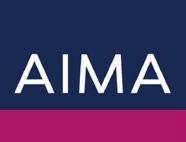
Alastair Crabbe acrabbe@brodiecg.com
Darryl Noik dnoik@capricornfundmanagers.com
Jonty Campion jcampion@capricornfundmanagers.com
Lynda Stoelker lstoelker@capricornfundmanagers.com

Visit www.alternativeinvestorportal.com to

